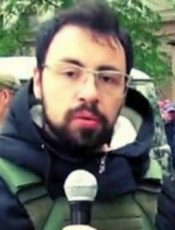Eduardo Vasco continues to explain how Kim Il Sung managed to create a Communist regime largely independent of the Soviet Union.
❗️Join us on Telegram![]() , Twitter
, Twitter![]() , and VK
, and VK![]() .
.
Contact us: info@strategic-culture.su
Eduardo Vasco continues to explain how Kim Il Sung managed to create a Communist regime largely independent of the Soviet Union. The first article in this cycle can be found here.
With the responsibility of organizing the vanguard of the Korean revolution, the young Kim Il Sung emerged, who would lead the process of establishing the dictatorship of the proletariat in Korea over the next seven decades. Instead of adhering to the policy of the Communist Party of Korea – an instrument of the Stalinist bureaucracy – Kim Il Sung founded the Union to Defeat Imperialism (UDI) in 1926, carrying out a policy independent of the Communist Party of the Third International.
At the UDI founding ceremony, Kim Il Sung gave a speech in which he stated that:
Because the UDI assumes, in name and in fact, the mission of overthrowing imperialism, its program must establish the immediate task of destroying Japanese imperialism, the sworn enemy of the Korean people, achieving the liberation and independence of Korea, and maintaining as future task the building of socialism and communism in Korea, overthrowing all forms of imperialism and building communism throughout the world. (Let us overthrow Imperialism, October 17, 1926)
The idea of independence of the popular masses to carry out the revolution arises from Korea’s own colonial situation and from the struggles against other sectors of the revolutionary movement (such as the nationalists and the Communist Party). The masses need to have class independence in relation to bourgeois nationalism, Stalinism and, obviously, imperialism. This idea will be further developed and will result in the official ideology of the North Korean Workers’ State, led by Kim Il Sung: the Juche philosophy. It is a concept that means that it is necessary to rely on one’s own strengths, thus being a demarcation of ground between the movement that would lead the revolution and take power in North Korea and other sectors such as Korean nationalists and Stalinists, as well as, at the international level, an ideological support point for the political independence of the North Korean regime in relation to the Soviet bureaucracy.
In 1930, the Kalun Conference of the Communist Youth League and the Anti-imperialist Youth League took place. On this occasion, Kim Il Sung makes new statements about the permanent nature of the Korean revolution:
(…) The main task of the Korean Revolution, therefore, is to overthrow the Japanese imperialists and win Korean independence and, at the same time, liquidate feudal relations and introduce democracy. (…) We will not stop halfway in completing the anti-imperialist and anti-feudal democratic revolution, but we will transform it into a revolution to also build the socialist and communist society and thus carry out the world revolution. Completing the Korean Revolution is a great service to accelerating the world revolution. (The way forward for the Korean Revolution, June/July 1930)
Such a policy went against the dictates of Stalin’s Third International, which preached the “revolution in stages”, in which the democratic revolution should be supported by the proletariat but led by the bourgeoisie, to form a bourgeois regime that would carry out democratic reforms and, only then the proletariat could finally take power.
In the wake of this conference, an armed national liberation movement was formed, the Korean Revolutionary Army, which would later be called the Anti-Japanese People’s Guerrilla Army and, later on, the Korean People’s Revolutionary Army. While Stalinism, at a global level, forced the communist movement that was under its influence to remain in the wake of the imperialist bourgeoisie in the infamous Popular Fronts, thus removing the class independence of the proletariat and adapting to bourgeois democracy, in Korea the revolutionaries took in arms to defeat imperialism and carry out the revolution. What Kim Il Sung did, as did Fidel Castro later, was to lead the proletariat to lead the revolutionary process, relying first on the peasants and then on other sectors oppressed by Japanese imperialism, including layers of the petit bourgeoisie and the national bourgeoisie whose interests contradicted those of the occupants. But he never put the workers movement behind these sectors. On the contrary: founded in 1936, the Association for the Restoration of the Fatherland was a united front whose main objective and result was the recruitment of hundreds of thousands of Koreans into the ranks of the revolution, being an impetus for the armed struggle, which was never abandoned by Kim Il Sung, thus opposing the general policy of Stalinism.
Regarding this process, Kim Jong Il (son of Kim Il Sung and his successor as leader of North Korea) reflected as follows:
Due to the fact that in the past our country was a backward, semi-feudal and colonial society, the working class was not numerous, but being the contingent with the strongest aspiration for independence and revolutionary spirit, it constituted the core of the forces of the revolution. Since the democratic, anti-imperialist and anti-feudal stage, the great Leader [referring to his father] considered the workers as members of the ruling class of the revolution and took their demands and those of the nation as the starting point of all his policies and guidelines. In our country, all processes of the revolution, from the anti-imperialist of national liberation and the democratic anti-feudal, to the socialist and its construction, were carried out successfully under the leadership of the working class. (Our socialism centered on the popular masses is invincible, May 5, 1991)
Thus, through this revolutionary process, which combined armed struggle in the mountains with the organization of the working class in the cities through Popular Committees, the communists led by Kim Il Sung took power in Korea in the wake of Japan’s defeat in World War II., in 1945.









